TUNA
-PESCADERO-
Tuna Pescadero
TUNA features two distinct types of residencial proposals that adapt to your needs and preferences, with villas & townhomes, that differ in size, distribution and characteristics. Every space is thoughtfully designed to complement your lifestyle and make the most of your living experience.
TUNA EXTERIOR PHOTOGRAPHIC

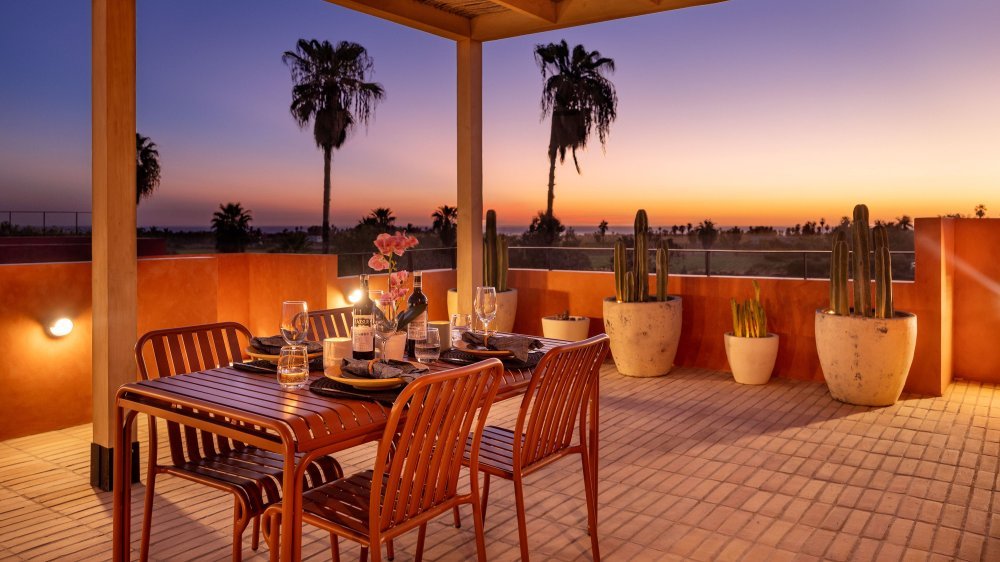
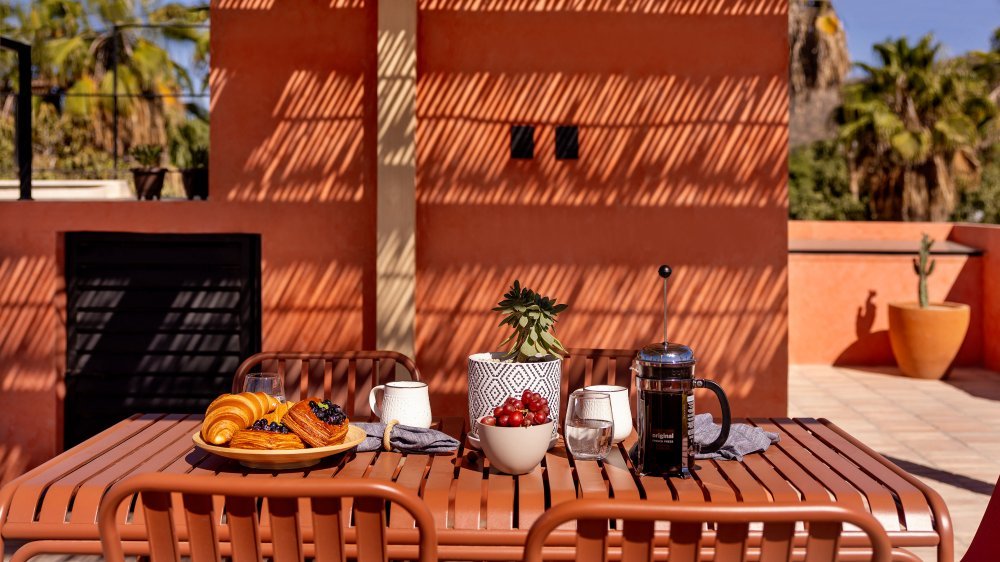
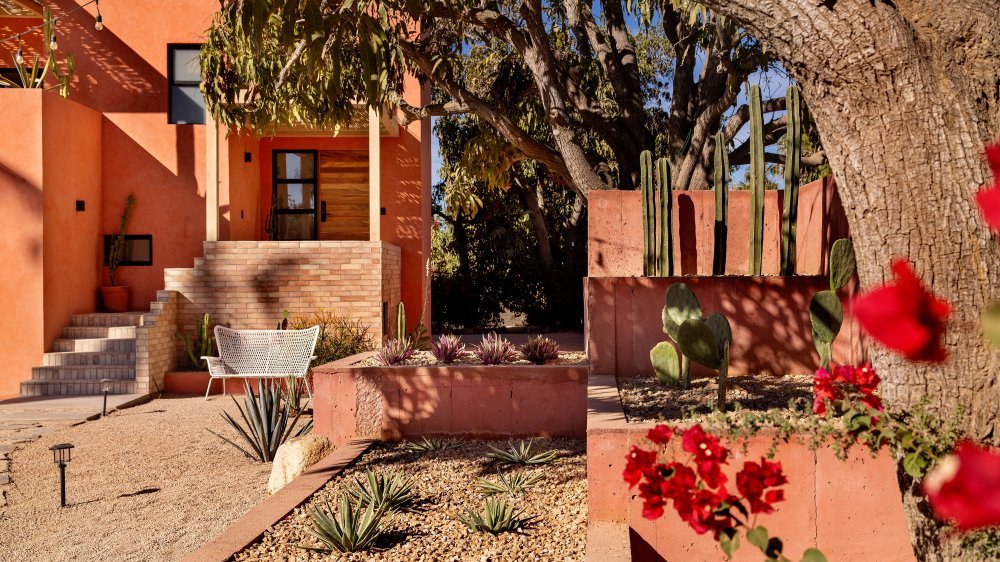
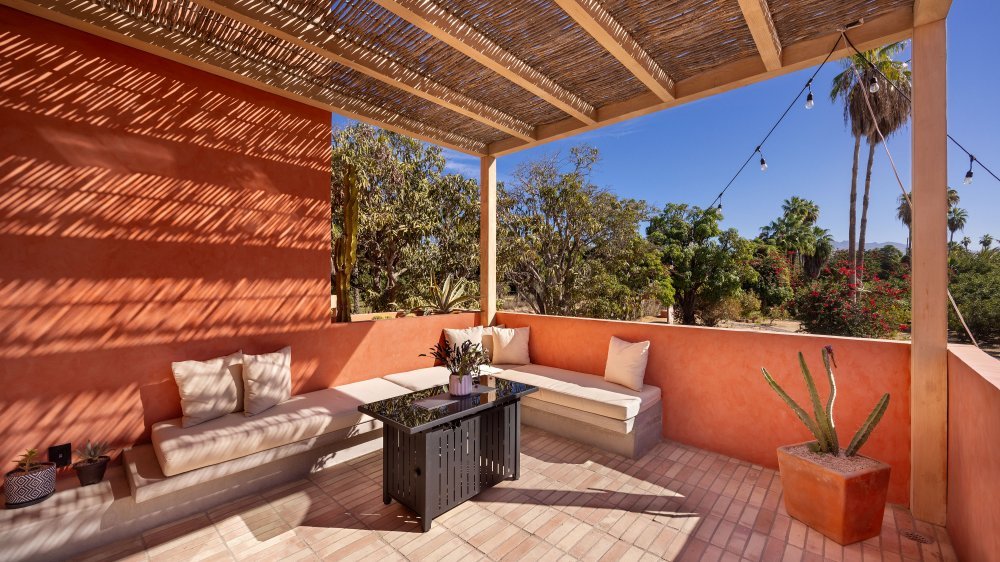
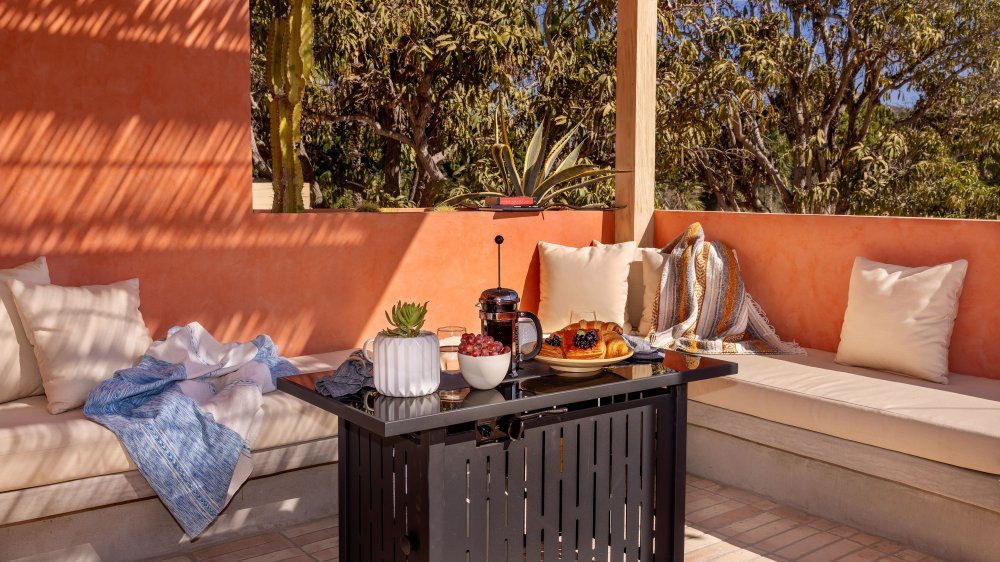
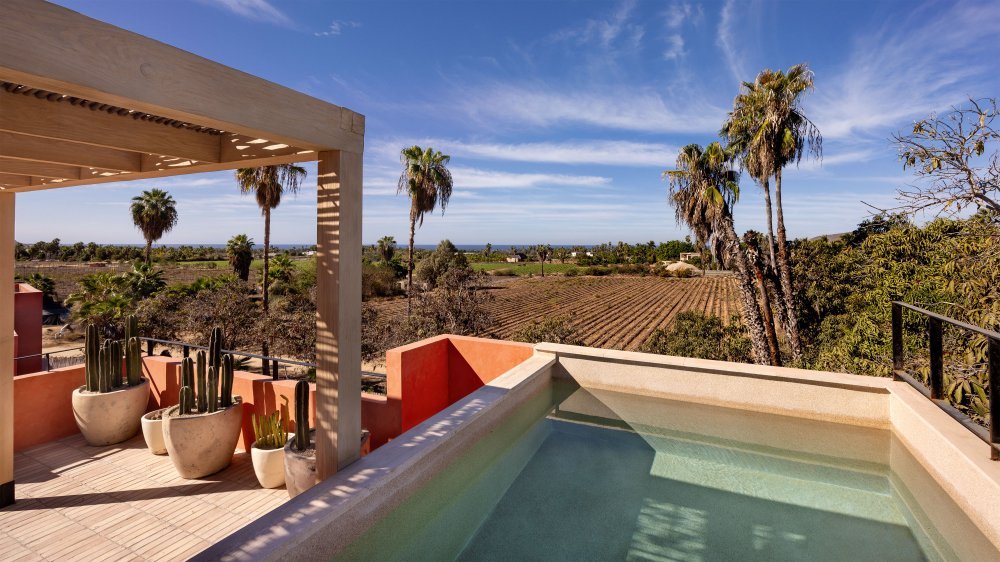


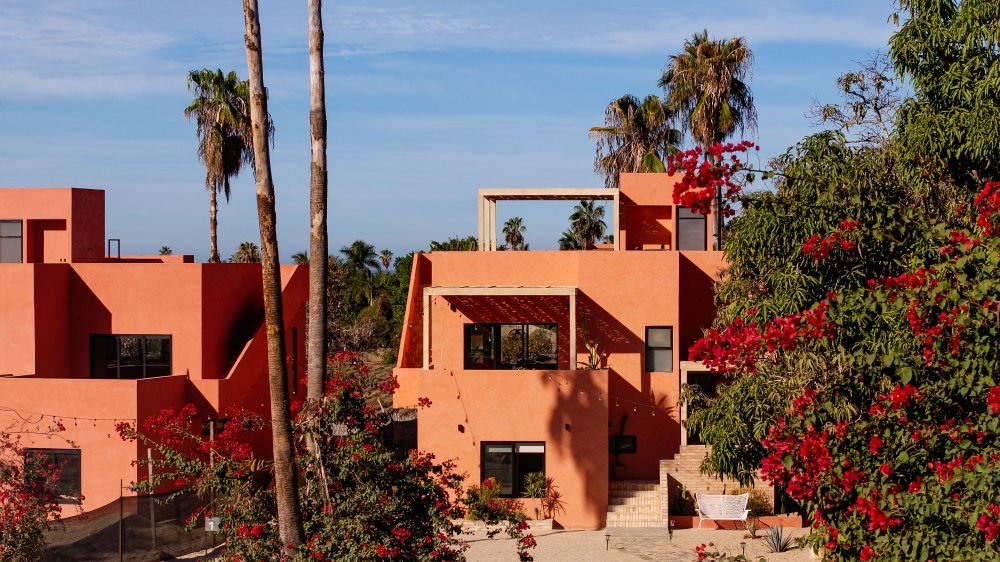
THE VILLA
TUNA VILLA
307.9 m² | 3,314.5 ft²
This stunning villa model features 3 bedrooms, 3 full bathrooms, 2 half bathrooms, and a multitude of private amenities that are sure to exceed your expectations.
Spanning over 2 floors, a rooftop and a lock-off basement, this villa offers ample space for you and your loved ones to enjoy. The first is dedicated to the 3 spacious and well-appointed bedrooms that offer the perfect retreat after a long day.
The second floor accommodates a spacious living room with a terrace, kitchen, dining area and balcony with beautiful views, that make an ideal setting for entertaining guests or enjoying a cozy night in.
The highlight of our Tuna Villa, however, is the rooftop with its own plunge pool and outdoor living space. Imagine your mornings soaking in the water or relaxing at night with a glass of wine by the fire pit. PDF
THE TOWNHOME
TUNA TOWNHOME
225.2 m² | 2,424.0 ft²
Our townhome model, consisting of 2 bedrooms and 2.5 bathrooms, is the perfect haven for a cozy and comfortable life. Stepping inside, you’ll discover a warm and inviting atmosphere.
Spreading over 2 floors and a rooftop, this charming townhome offers a splendorous living experience. The first floor holds an interior and backyard patio designed for your leisure, while the second floor is dedicated exclusively to its sleeping quarters, along with a balcony to take in the views.
The rooftop, with its outdoor living space, is the gem of our Tuna Townhome. Picture yourself basking in the sun, sipping a morning coffee at the terrace or stargazing by the fire pit. PDF
Flexible Payment Plans:
We offer flexible payment options throughout the construction process, making it easier for your clients to invest with confidence.
Architecture & Design
Models, Pricing, and More…
Click Photos to Enlarge.
Parking:
Each Villa and Townhome includes parking right out front, with additional guest parking available outside the gate, ensuring convenience for both residents and visitors.
TUNA INTERIOR PHOTOGRAPHIC

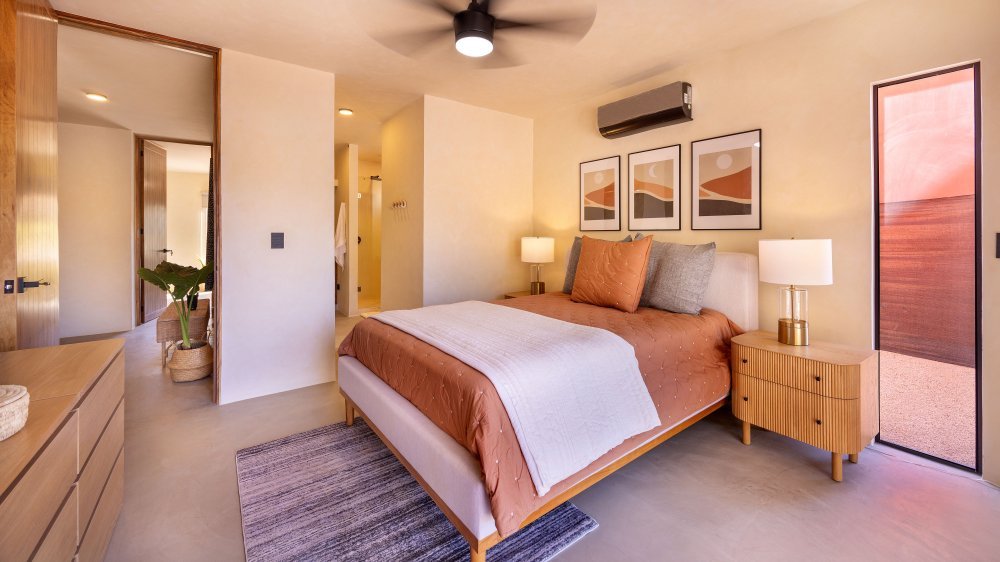
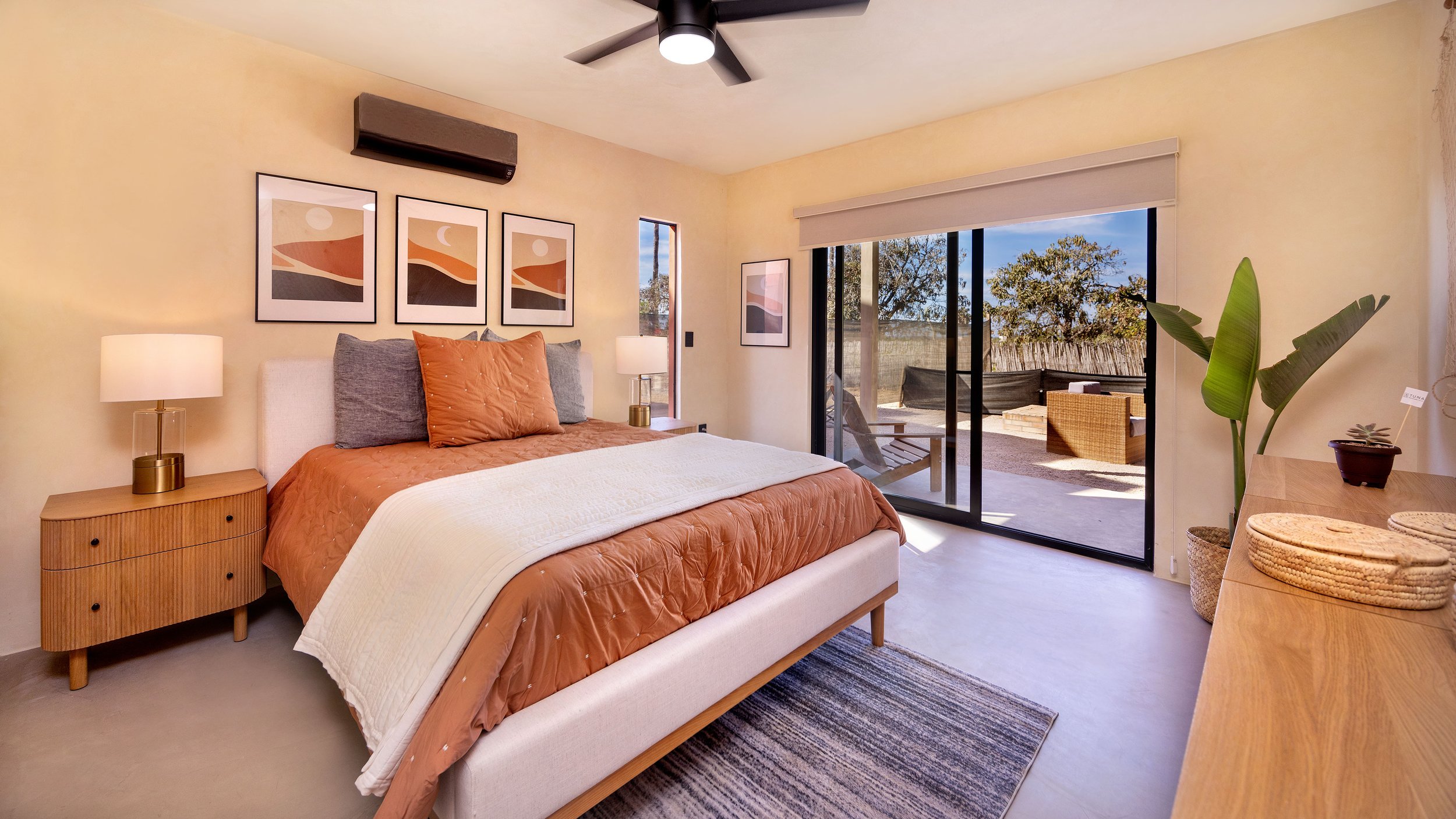

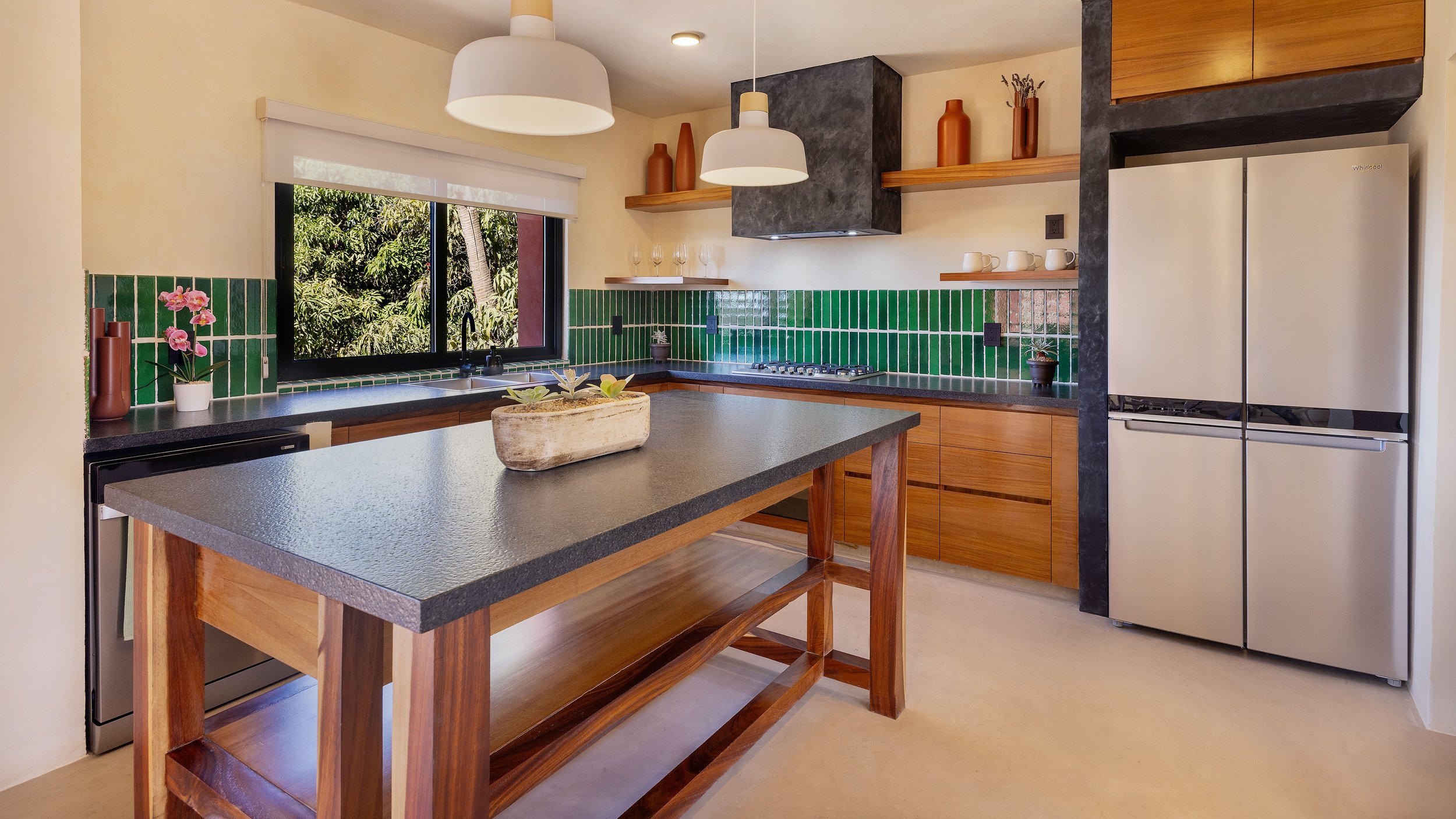
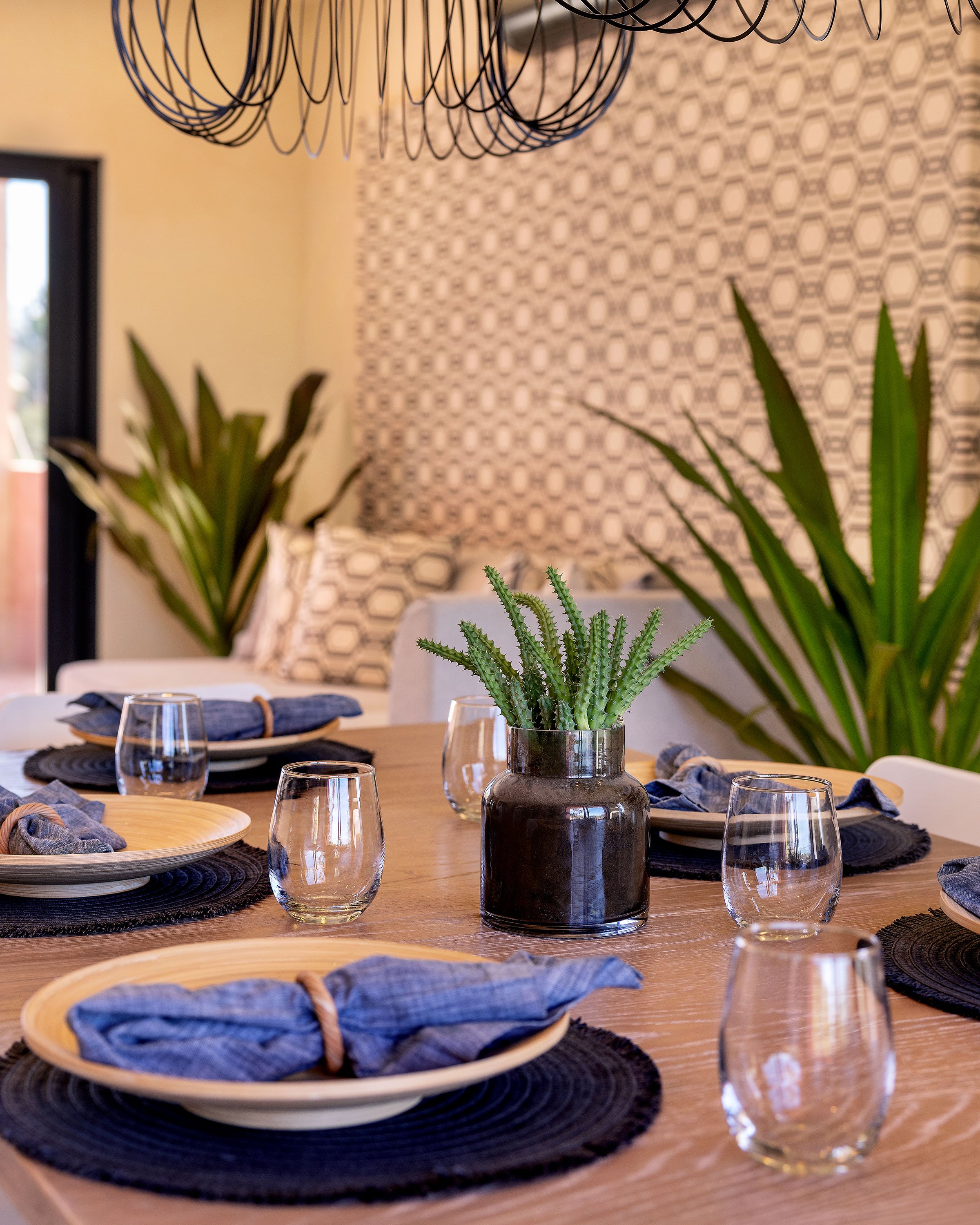
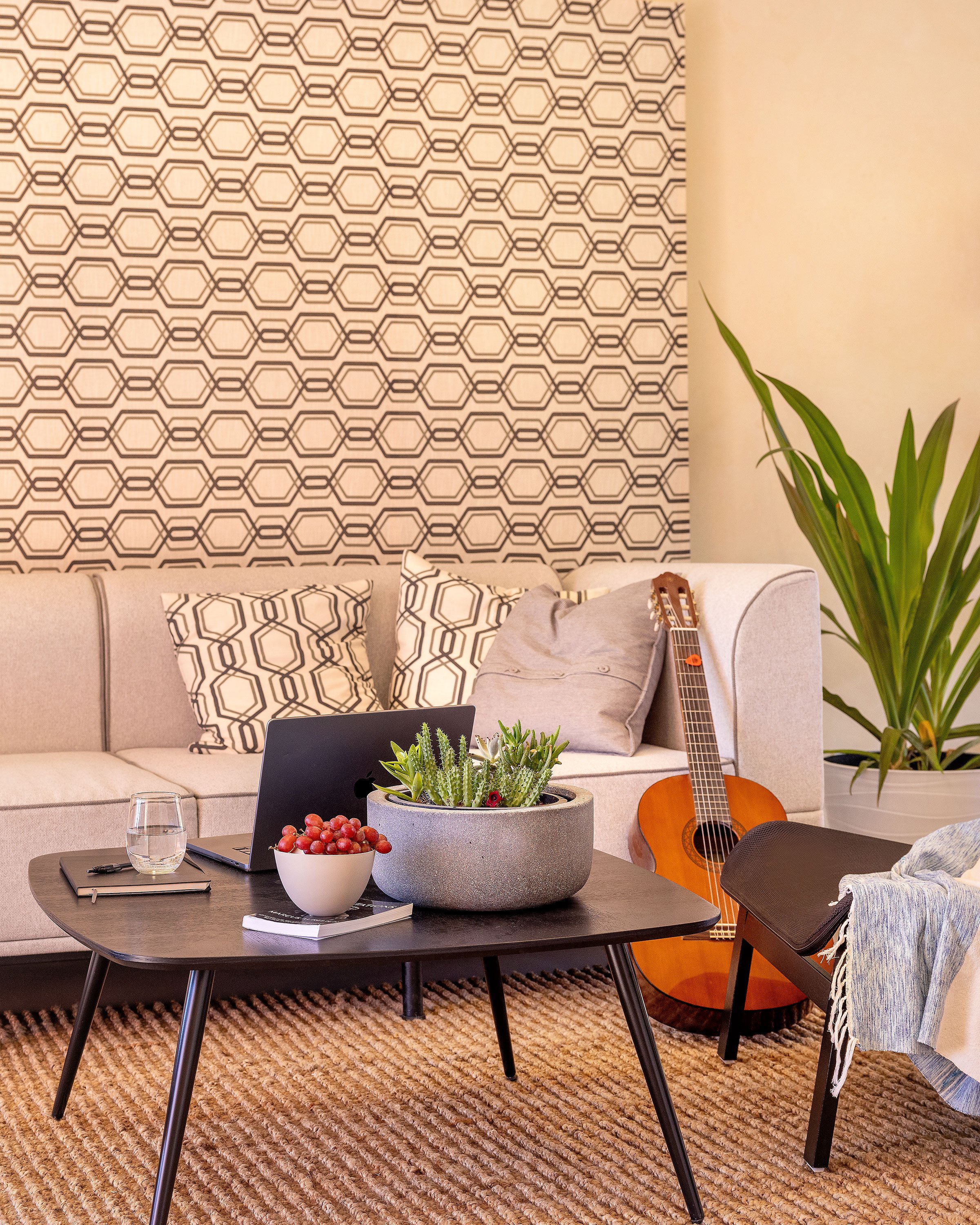
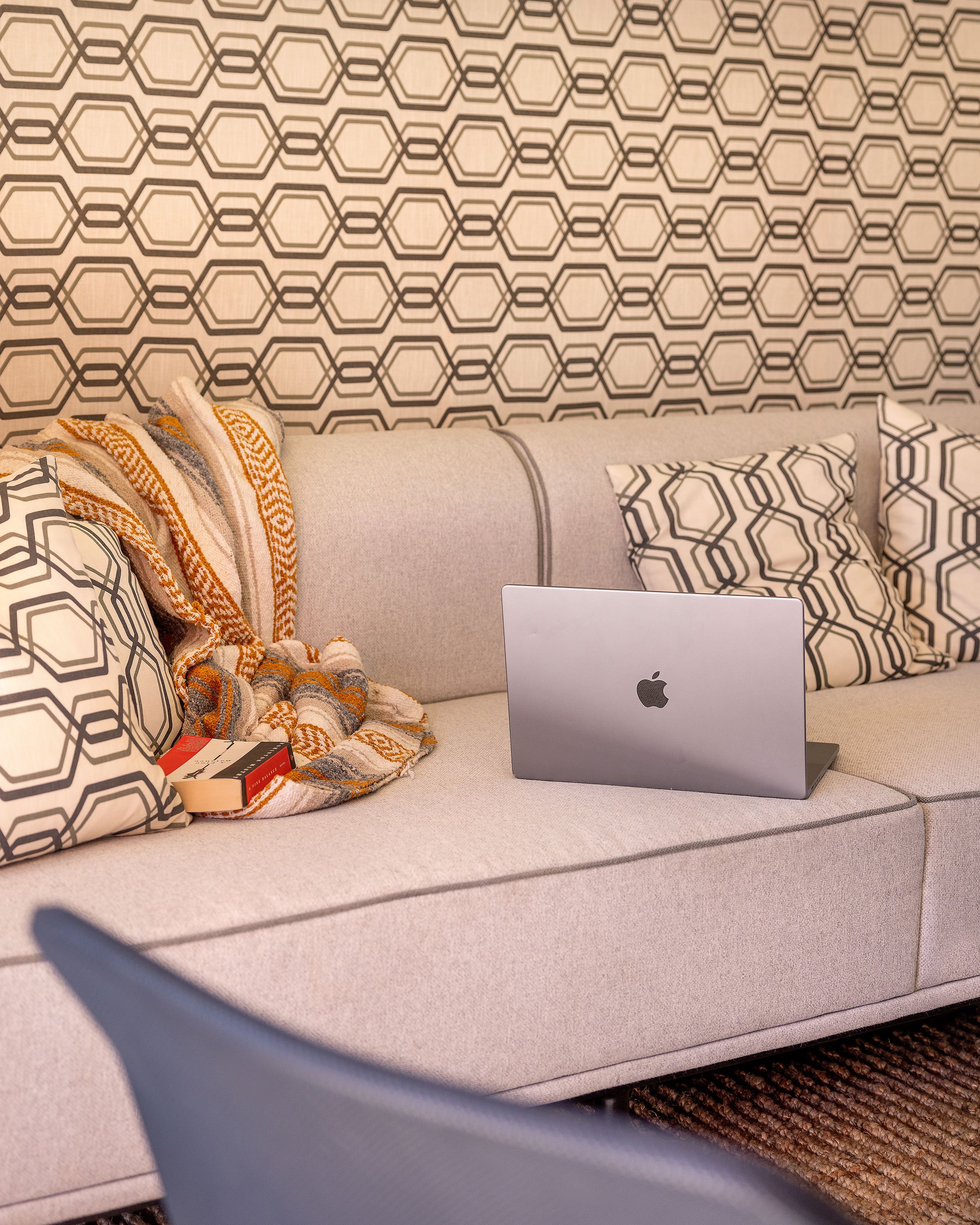

AMENITIES
The Tuna Pescadero community offers a range of high-end amenities, including a clubhouse, fitness center, pickleball court, and a main pool set within beautifully landscaped grounds. This gated community is located in the heart of Pescadero, and these amenities are on track to be completed by next season.




-Pescadero-
Pescadero is a small fishing and farming village with pleasant climate along the Pacific Coast in Baja California Sur. It is located near Km. 64 on Mexico 19, at just 10 Km. of Todos Santos.
Driving around, you will find palm plantations surrounding the roads as well as farmlands producing strawberrie, corn, tomatoes, greens and more.
Whether you are interested in cultural attractions an art galleries, activities like hiking, mountain biking and scuba diving or even just relaxing on the beach, there’s something for everyone in Pescadero.
-
Pescadero is a small, coastal town located in Baja California Sur, Mexico, about an hour north of Cabo San Lucas and just south of the popular artsy beach town of Todos Santos. Known for its lush agricultural lands, beautiful beaches, and laid-back atmosphere, Pescadero has a rich history rooted in indigenous traditions, colonial encounters, and more recent tourism and agricultural developments.
Indigenous Roots
Before the arrival of European explorers, the Baja California Peninsula, including the area around Pescadero, was inhabited by indigenous groups such as the Pericú and the Guaycura. These groups practiced a semi-nomadic lifestyle, subsisting on fishing, gathering, and hunting. The Pericú people were known to live near the coast and had developed a distinct way of life in this arid desert region. The indigenous populations were heavily impacted by Spanish colonization, leading to significant population declines due to disease and cultural disruptions.
Colonial Era and the Mission System
During the late 17th and early 18th centuries, Jesuit missionaries arrived in Baja California, bringing Christianity and establishing missions throughout the region. The missions aimed to convert indigenous populations and impose European agricultural practices. Although Pescadero itself didn’t host a mission, nearby Todos Santos became an important mission center and agricultural hub. The influence of the mission system reshaped local society, often leading to forced labor and the decline of native cultures.
Development of Agriculture
Pescadero and the nearby Todos Santos area became known for agriculture in the 19th and early 20th centuries, especially in growing sugarcane, corn, and other crops. The fertile soil, fed by underground aquifers, made it possible to develop productive farmlands, even in an otherwise arid environment. Sugar production boomed in the late 1800s, and the region gained a reputation for its agricultural products, creating a local economy that depended on farming and fishing.
20th Century Changes
Throughout the 20th century, the agricultural economy continued to develop, but as sugar production declined in the mid-1900s, many people turned to growing fruits, vegetables, and chilies, some of which were exported to mainland Mexico and the United States. This shift away from sugar marked a transition, with agriculture remaining central to Pescadero’s economy but with new crops and diversified agricultural practices.
The construction of the Transpeninsular Highway in the 1970s brought increased connectivity to the Baja Peninsula, facilitating tourism and commerce in previously remote areas. This development opened the door for Pescadero’s transformation into a destination for tourists seeking a quieter alternative to Cabo San Lucas.
Rise of Tourism and Real Estate (Late 20th - Early 21st Century)
Pescadero’s serene beaches, like Los Cerritos, began to attract surfers, travelers, and expatriates looking for a relaxed lifestyle. As tourism in Baja California Sur grew, Pescadero benefited from its proximity to both Todos Santos and Cabo San Lucas, establishing itself as a hidden gem for visitors. Surfing and eco-tourism flourished, and the town became known for its organic farms, boutique hotels, and unique fusion of Mexican and international cultures.
More recently, Pescadero has experienced growth in real estate and tourism, with expatriates purchasing properties and creating small businesses like farm-to-table restaurants, eco-lodges, and surf schools. This economic shift has made Pescadero a lively yet tranquil destination known for its blend of natural beauty, agriculture, and laid-back lifestyle.
Today, Pescadero is an example of Baja California Sur's fusion of traditional Mexican culture, agricultural heritage, and modern, sustainable tourism, appealing to visitors and residents who appreciate its rich history and natural charm.
Like an oasis in the middle of the desert, T U N A stands with a luxury landscape design that merges with the environment and connects with nature. Beyond a home, you’ll find a sanctuary that feels just like a summer breeze.
There are several beaches in the Pescadero area with beautiful views and great for activities such as fishing, surfing, camping or just laying in the sand.
Enjoy delicious meals, there is no shortage of amazing dining in the area with different types of local food: Same Same But Different, Noah Japanese Food, Agricole Cooperativa, Barracuda Cantina, Pura Playa Bar.
The Local Farmer’s Market won’t disappoint, you will find fresh produce, paintings, jewelry, blankets, locally-made clothing, and much more.
Only a 10 minute drive from Pescadero, visit Todos Santos. You will find colorful streets with murals and colonial buildings filled with artisanal shops, boutiques, cafes, art galleries and upscale restaurants. Don’t miss the art, film, wine and multiple festivals that take place ALL YEAR ROUND.
Sustainability
We are aware that we face a crucial challenge: not to compromise the ecological balance and natural beauty of our lands. In this context, T U N A aims to distinguish itself with its sustainable approach and unwavering commitment to environmental protection and the preservation of local flora and fauna.
In addition to having a design that respects and integrates with the natural environment, T U N A employs sustainable technologies to minimize its environmental footprint. This includes the implementation of solar energy systems, energy efficiency, and the reuse of rainwater for irrigation and other non-potable purposes.
We are committed to educating our community and future residents about the importance of conservation and coexistence with local flora and fauna, offering volunteer activities to engage the community in the preservation of the natural environment.
BAJA SUR
Torres Trueba & Lopéz Letayf
Torres Trueba & Lopéz Letayf, a Mexican firm based in CDMX, which specializes in Residential, Cultural, Retail and Urban design breathe TUNA into existence with a concept where nature and construction merge into the space like no other.
The houses are designed to create a seamless connection between the interior and the exterior areas. Thanks to openings to the outside through the facade, they receive fresh air and adequate ventilation throughout the day.



